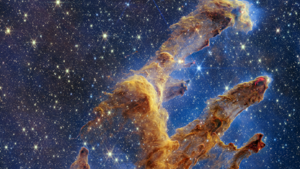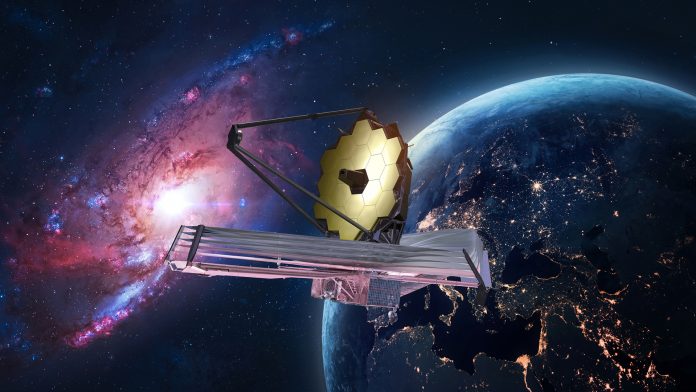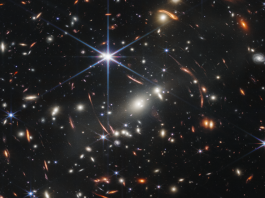For the first time, NASA’s James Webb Space Telescope has obtained an image of the Pillars of Creation in unprecedented detail.
The Pillars of Creation are iconic, dense clouds of gas and dust in which new stars form, and they first became popularised when NASA’s Hubble Space Telescope imaged them in 1995. Now, using the advanced instruments of the James Webb Space Telescope, scientists can observe its lush landscape in highly-precise detail.
The new image will enable researchers to enhance their star formation models by identifying more precise counts of newly formed stars and quantities of gas and dust in the region. This data will further our understanding of how stars form and burst out of these dusty clouds over millions of years.
What is the James Webb Space Telescope?
James Webb is an international programme led by NASA in collaboration with the European Space Agency (ESA) and the Canadian Space Agency (CSA). The groundbreaking telescope is equipped with a plethora of advanced instruments that will help to broaden our understanding of the Universe. In the coming years, Webb will help solve the greatest mysteries of the Universe, allowing us to observe distant planets, stars, and enigmatic structures and solve the mystery of our origins. The telescope has now attained the most detailed image to date of the Pillars of Creation.
Analysing the Pillars of Creation
The Pillars of Creation consist of three-dimensional pillars that resemble intergalactic rock formations but are, in fact, permeable. The columns are comprised of cool interstellar gas and dust that sometimes appear semi-transparent in near-infrared light.

Employing Webb’s Near-Infrared Camera (NIRCam) revealed newly formed stars – these bright red orbs usually have diffraction spikes and lie outside one of the dusty pillars. When knots with significant enough mass form within the gas and dust pillars, they start to collapse under their own gravity, become hotter, and ultimately form new stars.
The wavy lines emitted from the edges of the Pillars of Creation are ejections from stars that are still forming in the gas and dust. Young stars intermittently eject supersonic jets that crash into clouds of material, such as these thick pillars, sometimes resulting in bow shocks that form wavy patterns.
The crimson glow is caused by the energetic hydrogen molecules from the jets and shocks. This is most evident in the second and third pillars from the top, with these young stars estimated only to be a few hundred thousand years old.
Despite it appearing that the near-infrared light allowed the telescope to look through the clouds to view cosmic distances beyond the Pillars of Creation, there are no galaxies in this image – instead, an amalgamation of translucent gas and dust called the interstellar medium. Other observatories have examined this region with a range of advanced instruments, each providing novel details of an area teaming with stars.
James Webb will continue to illustrate the wonders of the Universe, providing details that inform us of our own existence.









